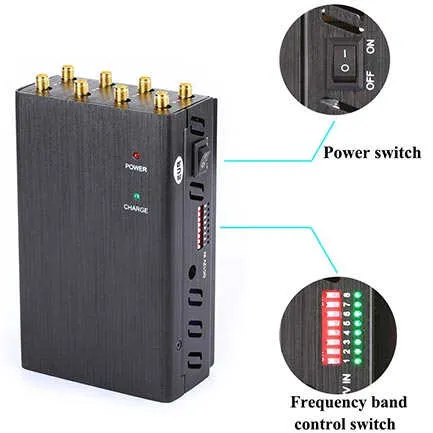When jamming communications, the emphasis is on the portable jammer signal strength at the victim receiver's location, when in reality equal emphasis should be placed on the space or "link distance" between the transmitter and receiver.At the data link layer, it can interfere with the receiver by destroying legitimate packets by violating the protocol, or it can interfere with the sender by capturing the carrier with continuous transmission (another form of protocol violation) to prevent the sender from sending.This can be achieved by a jammer through attacks at the physical layer or the data link layer.
In this paper, the term "parity distance" describes the maximum distance between a transmitter and a victim receiver and is equal to the signal strength from the jammer.A gps blocker is defined as an "entity that purposely attempts to interfere with the physical transmission and reception of wireless communications".It has been passively listening to the network and at chosen times attacking it in a way that follows its protocol as if it were part of it.Jammer also knows the communication protocol of the target network.It's not as effective (constant or deceptive) as the jammer it mimics, but more energy efficient than it.
Using a higher-gain directional antenna helps increase the effective radiated power and improves the signal-to-noise ratio of the receiver (antenna reciprocity).It's very effective, but just as energy inefficient as a persistent jammer.A deceptive jammer understands the protocol of the target network and jams the network by continuously transmitting legitimate packets at a high rate for a period of time in order to keep the vector captured.Constant wifi blocker is unaware of the existing protocol of the network (bit rate, packet size, etc.), and thus continuously transmits bits over a period of time without following any protocol.
When the communication signal strength is greater than the interference signal strength, the transmitted signal can "burn through" the interference signal; making the interference invalid.Conversely, when the transmitter and receiver are close to each other, interfering signals have less impact on the link.Any distance less than the parity distance means the transmitter signal is closer and its signal is stronger than the jamming signal, making the jamming signal less efficient or useless.From an electromagnetic attack standpoint, this situation creates false positives; thinking the victim receiver is jammed and reporting the effect to the tactical commander.
signal jammers function like persistent jammers or deceptive jammers, but at random.Improvements in communication and interference are primarily a result of improved antenna performance.As the signal travels farther and farther from the transmitter, it gets weaker.For a receiver to detect a signal, it must be as sensitive as the strength of the arriving signal.The weaker the signal, the more sensitive the receiver must be.The greater the distance between the transmitter and receiver, the more effective the jamming signal will be.
At the physical layer, a jammer can only interfere with a receiver by transmitting at high power on the network frequency and reducing the signal-to-noise ratio below the receiver's threshold; however, it cannot prevent the transmitter from transmitting, so it cannot interfere with the transmitter.The link distance between the victim receiver and the transmitter (or transceiver) is critical because either the receiver or the transmitter can move close enough to the other and "burn through" the interference.The term "burn-through" refers to the effect of the transmitted signal strength at the victim receiver being greater than or equal to the signal strength from the drone jammer.
Related articles
Solutions to mobile phone signal jammers in oil depots
Are car gps signal jammers useful?
Business secrets still require cell phone blockers



 留言列表
留言列表


